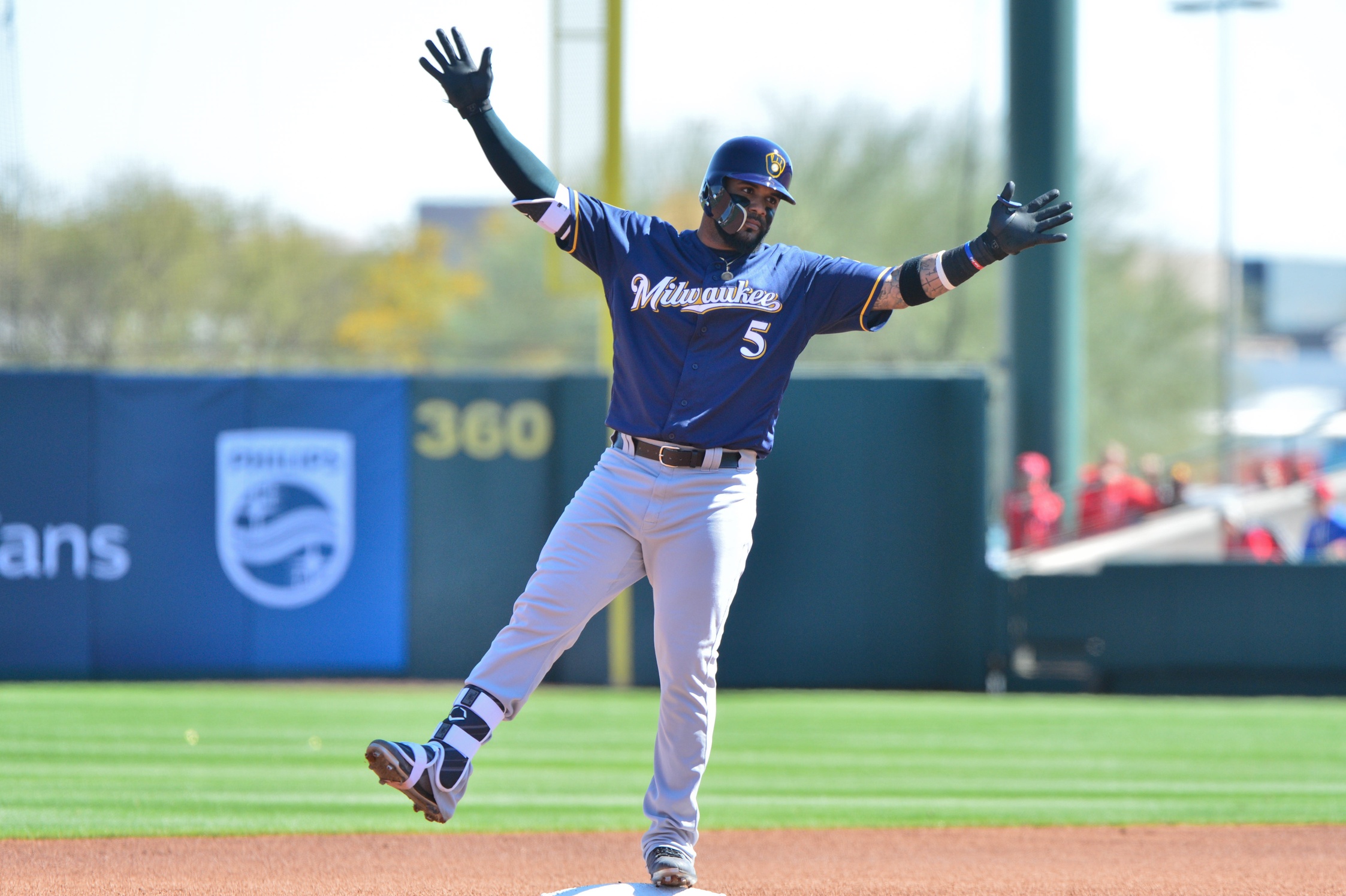The 2018 Brewers should hit. Barring a major Spring Training trade, they’re set to enter the season with the deepest lineup in recent Milwaukee history. The lone remaining area of uncertainty is at second base, where incumbents Jonathan Villar and Eric Sogard figure to squabble for playing time, each trying to prove that their respective 2016 and 2017 breakouts were more than a fluke. Dylan Svoboda addressed the brewing battle for playing time between the two just last week. Meanwhile, Neil Walker, the erstwhile Met who posted a strong .843 OPS with the Brewers through the last one and a half months of 2017, remains unsigned. Should his asking price sufficiently drop, it’s not hard to imagine a two- or three-year reunion with Milwaukee. (Indeed, some fans have been clamoring for exactly such a signing since shortly after the season ended.)
It’s easy to jump on that train of thought. Villar struggled last year, Sogard faded badly down the stretch, and Walker departed in pursuit of greener pastures. On the other hand, Walker is 32 years old and the resources required to sign him could probably be better allocated towards bolstering the starting quintet. Sogard is a fine, if expendable, bench type, and a healthy Villar has the potential to be a difference-maker on both sides of the ball.
“Healthy” here being the operative word.
What you have to remember about Villar’s 2017 is this: On June 9, he dove hard for a ball in the hole, bounced off the grass, and was subsequently carted off the field with a back strain. His absence opened the door for Sogard, and, well, you know the rest of the story.
To be fair, Villar had scarcely been setting the league aflame before the injury, hitting just .213/.283/.342 with a sky-high strikeout rate of 30.6 percent. But news emerged last week that even this performance was marred by ill health. Following the World Baseball Classic, Villar battled a tight right shoulder through the early stretches of 2017. That could help explain, for example, why one of the fastest players in baseball was only able to muster a .294 BABIP before he hit the DL. Even so, he ran a healthy 8.9 percent walk rate and a 72.3 percent contact rate, not hugely far from the 11.6 and 75.2 rates he posted in his breakout 2016.
After Villar returned to Milwaukee on June 27, his batting average and BABIP the rest of the way ticked back up to where you’d expect them to be. The second baseman hit .275 and .373, respectively, compared to .285 and .373 in 2016. But he lost control of the strike zone, perhaps due to the sporadic playing time he received upon his return. His walk rate plummeted to an uncharacteristic 4.3 percent post-injury, as Villar swung and missed more often and his contact rate plunged to 69.4 percent. He’s always been an aggressive player with more than his share of strikeouts, but his career 9.1 walk rate indicates that something was wrong post-injury, be it lingering effects of his injury or an inability to settle in as a part-time player.
This winter, Villar set about righting that wrong, taking video cues from plate-discipline-demigod Joey Votto with him to winter ball in the Dominican Republic. Expect to see Villar altering his two-strike approach this season, perhaps choking up on the bat to shorten his stroke. It worked for him in the Dominican Winter League, where he hit over .300 (albeit with limited power) and posted identical strikeout and walk rates of 11.8 percent over 76 plate appearances. It’s a tiny sample, to be sure, but it represents some progress for a player whose return to form could elevate the Milwaukee lineup to world-class. The booming ground-rule double with which he welcomed Shohei Ohtani to the major leagues is a little something more to dream on.
As Opening Day draws nearer, remember this: Even if he doesn’t repeat his monster 2016, Villar offers the Brewers a killer combination of youth and upside. This is a player who mashed 19 home runs and stole 62 bases as recently as 2016. I’ve already made the case that Villar could one day hit for even more power. 2018 will be his age-27 campaign, so there’s every reason to believe that he has plenty left in his legs. Give the man health and regular playing time, and Brewers fans may yet wish he’d signed that $20 million extension before last year.
Photo Credit: Matt Kartozian, USA Today Sports Images
